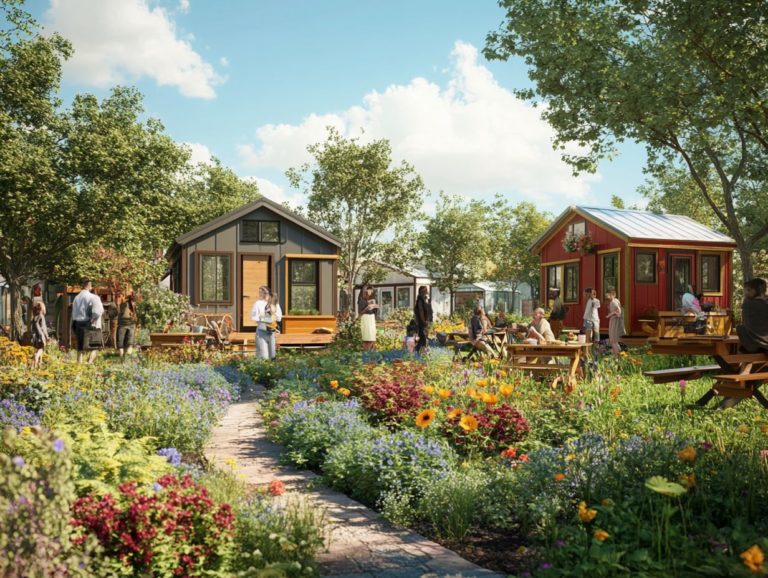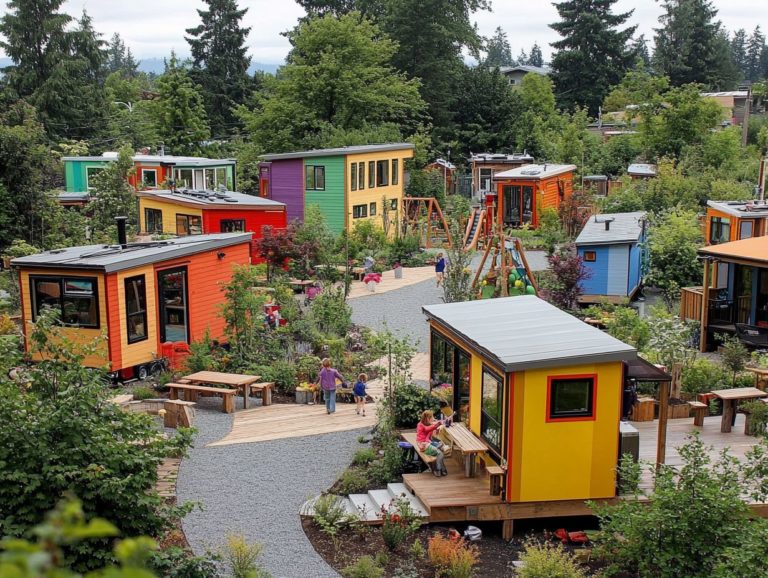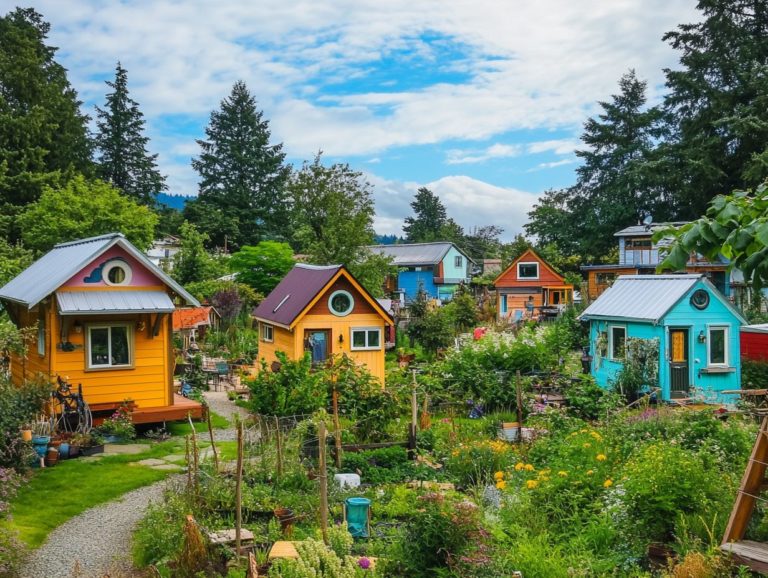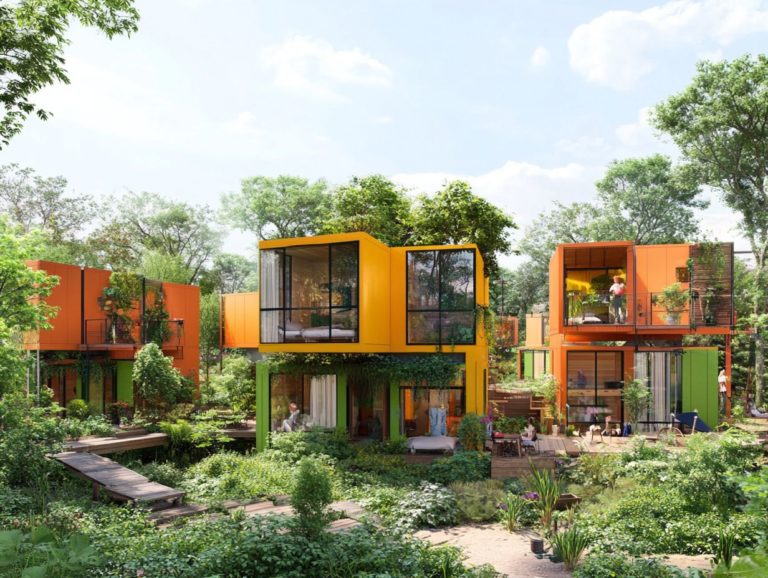How to Find the Right Tiny House Community for You
Tiny house communities transcend mere living arrangements; they create a distinctive lifestyle that emphasizes simplicity, sustainability, and connection.
As you explore alternative housing options, you ll find that these communities present compelling benefits, such as shared resources and strong community support. Choosing the right tiny house community involves careful consideration of various factors, including location and community guidelines.
This article delves into the advantages of tiny living, offers insights on finding the perfect community, and provides tips for building relationships within it. Immerse yourself in this exploration to see if a tiny house community could be your ideal home.
Contents [hide]
- Key Takeaways:
- Benefits of Living in a Tiny House Community
- Factors to Consider When Choosing a Tiny House Community
- How to Find the Right Tiny House Community for You
- Maintaining Relationships in a Tiny House Community
- Frequently Asked Questions
- What factors should I consider when looking for the right tiny house community?
- How can I find available tiny house communities near me?
- What amenities should I look for in a tiny house community?
- Are there any rules and regulations I should be aware of before joining a tiny house community?
- How can I determine the overall atmosphere and community culture of a tiny house community?
- What should I do if I can’t find a tiny house community that meets my needs?
Key Takeaways:
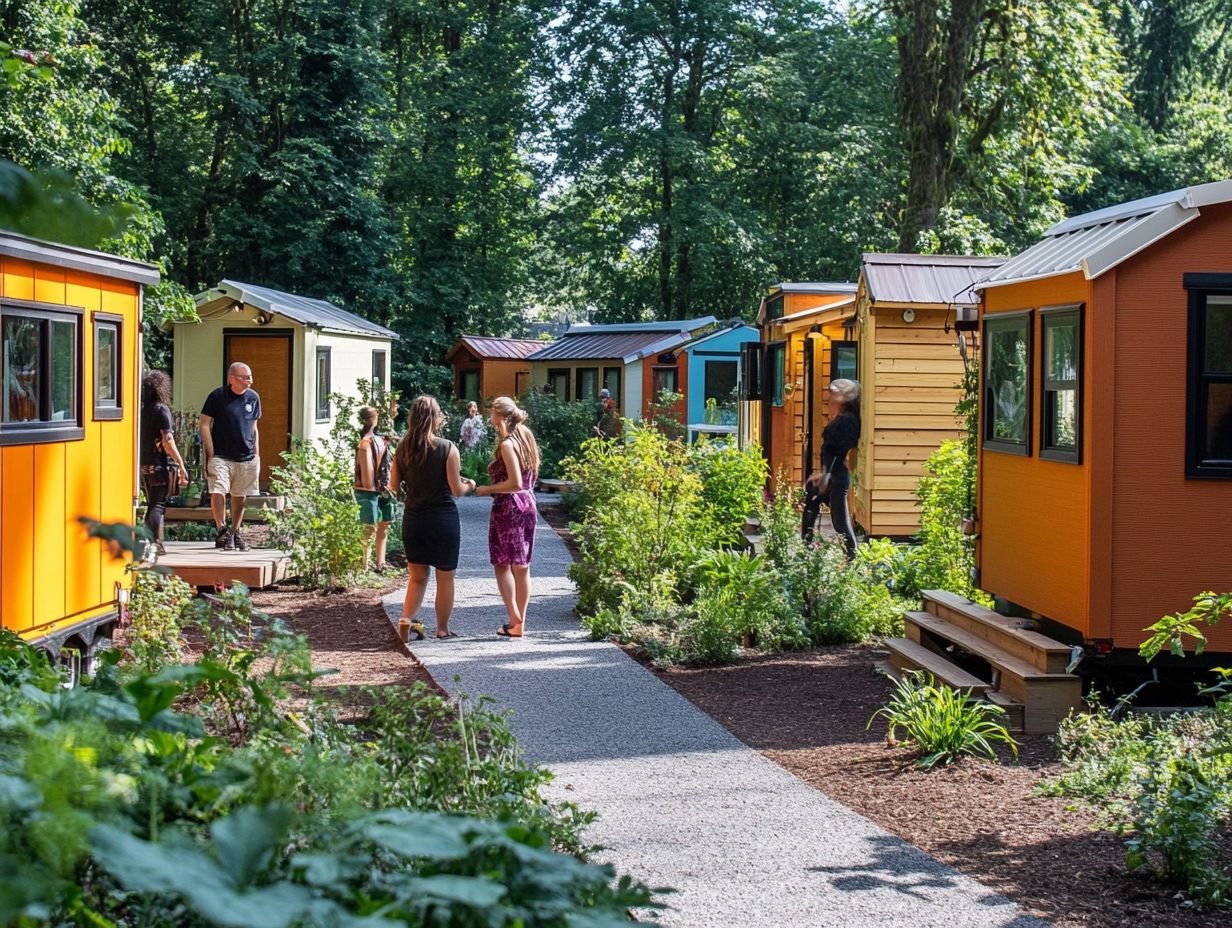
- Think about the location and amenities when selecting a tiny house community.
- Consider your personal needs and preferences during your search.
- Strengthen relationships through open communication and participation in events.
What are Tiny House Communities?
Tiny house communities are innovative residential setups where you can find individuals and families living in compact, sustainable homes. These designs promote simplicity and aim to minimize environmental impact.
In these unique communities, you’ll discover a blend of shared resources and communal spaces, fostering a supportive atmosphere for tiny house enthusiasts. This lifestyle aligns beautifully with the principles of the tiny house movement.
Typically, these communities emphasize sustainability, cost-effectiveness, and community engagement, addressing housing challenges in both urban and rural settings. Tiny house owners often share facilities like gardens, kitchens, and recreational spaces, creating rich opportunities for collaboration and connection. For those interested, life in a tiny house community offers valuable insights into what to expect.
This shared experience strengthens community ties, allowing you to enjoy a more vibrant social life while living in a way that s more economically accessible.
The philosophy behind tiny living emphasizes intentionality, encouraging you to prioritize experiences over possessions. This blend of urban and rural living fosters a sense of belonging, allowing you to forge lasting friendships and engage in community activities that enhance your quality of life.
Benefits of Living in a Tiny House Community
Living in a tiny house community presents a wealth of advantages, such as lower living expenses, strengthened community support, and access to shared resources that embody the heart of tiny living.
You ll embrace a lifestyle that champions sustainability and simplicity while building genuine connections with fellow tiny house enthusiasts. These communities often organize various events and workshops, providing a platform for members to exchange knowledge and experiences, ultimately enriching their quality of life.
Community Support and Shared Resources
Community support and shared resources are essential in tiny house communities, allowing you to build a genuine sense of belonging while keeping your costs in check.
By participating in various DIY workshops and local events, you can gain valuable skills, share tools, and maximize communal spaces, all fostering collaboration and connection with your neighbors.
These gatherings don t just provide practical insights like crafting sustainable furniture or organizing a garden they also help weave a network of friendships that enrich the community’s fabric. Imagine attending a weekend workshop on tiny house maintenance, where you can swap tips and tricks with fellow residents.
Seasonal events, like potlucks or movie nights, gather everyone for shared enjoyment, reinforcing social ties and boosting morale. Through these activities, the tiny house community uplifts individual residents and creates a collective spirit that enables everyone to thrive.
Such initiatives enhance your overall quality of life, making you feel valued and connected in a truly meaningful way.
Explore your options today and discover the tiny house community that fits your lifestyle!
Factors to Consider When Choosing a Tiny House Community
Selecting the ideal tiny house community requires careful consideration of several factors. Key aspects include location accessibility, zoning regulations, and environmental elements that can affect your daily living experience.
As a potential tiny house owner, don’t overlook the importance of considering the financial implications. Costs can vary significantly based on community amenities, utility availability, and local regulations. Exploring unique tiny house communities around the world can enhance your understanding of these factors, which is vital for finding a community that aligns with your personal goals and lifestyle objectives.
Location and Amenities
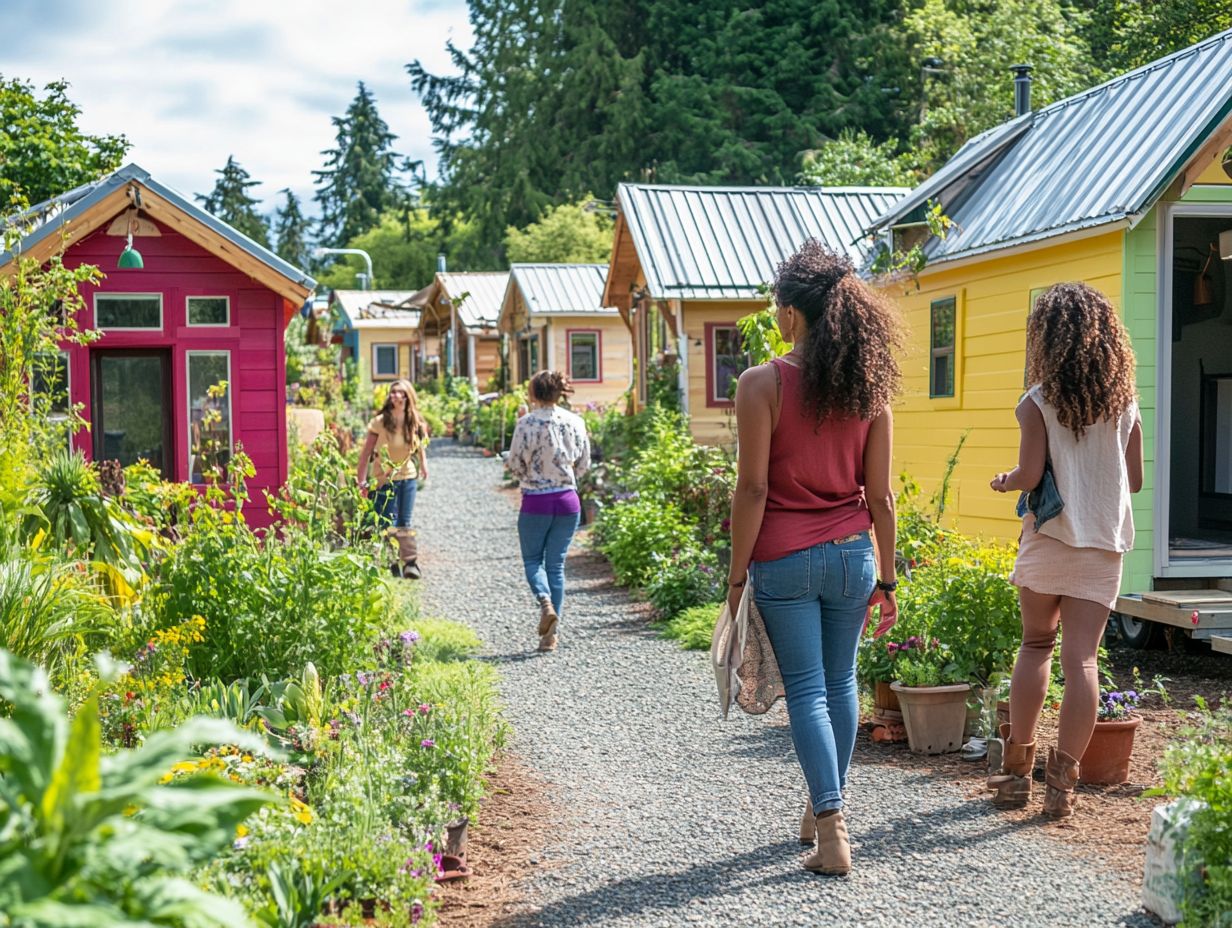
The location of a tiny house community significantly shapes your living experience, influencing your access to essential amenities, recreational activities, and social interactions. Communities in vibrant areas typically provide better access to resources, while those in quieter locations offer unique opportunities for privacy and tranquility.
In urban settings, you’ll enjoy the convenience of public transportation, diverse dining options, and a vibrant community atmosphere. However, be prepared for higher property costs and the fast-paced lifestyle that often comes with city living.
Suburban locations provide a balance between accessibility and spaciousness, creating a quieter atmosphere suitable for families.
On the other hand, rural tiny house communities boast expansive landscapes and a slower pace of life, although they may have limited access to essential services.
Each setting has its pros and cons, emphasizing the importance of thorough research into local laws regarding mineral rights (the rights to minerals found on the property), water rights issues, and utility access to ensure a sustainable living experience.
Community Rules and Regulations
Understanding community rules and regulations is essential for anyone considering joining a tiny house community. These guidelines govern aspects of daily life, including construction standards and neighbor interactions. Typically, the rules are based on zoning regulations and homeowners association policies, ensuring everyone adheres to agreed-upon standards that maintain the community’s integrity and aesthetic appeal.
Before making any commitments, it s important to review these regulations thoroughly. You ll need to understand occupancy limits, land use, utility guidelines, and maintenance obligations. It’s also crucial to check for restrictions on outdoor modifications, pets, and noise levels, as these can greatly impact your lifestyle.
By familiarizing yourself with these elements, you can better determine whether the community aligns with your expectations and values. This approach fosters a harmonious living arrangement with your neighbors. Being well-informed about these regulations not only ensures a smoother transition but also enhances the overall communal experience.
How to Find the Right Tiny House Community for You
Finding the perfect tiny house community requires meticulous research and exploration of options that match your values and lifestyle preferences. Engaging with tiny house enthusiasts in online forums and Facebook groups can provide valuable insights into various communities.
Visiting potential locations allows you to experience the living environment firsthand and see the available amenities, helping you make an informed choice that truly feels like home.
Start your journey to find your perfect tiny house community today!
Research and Visit Potential Communities
Meet tiny home builders and go to community gatherings to learn about the lifestyle, values, and amenities. This is essential for making an informed decision about your future living environment.
As you visit these communities, pay close attention to the vibe around you! Note the overall atmosphere, especially the level of engagement and support among residents. Observing shared spaces will give you a sense of their maintenance and suitability for communal living.
Don t shy away from interacting with both builders and current residents; asking open-ended questions can unveil authentic perspectives on the advantages and challenges of tiny house living.
Listening to personal stories and experiences not only enriches your understanding of lifestyle choices but also helps you grasp the community’s dynamics, helping you find lasting happiness in communal living.
Consider Your Personal Needs and Preferences
Think about what you really want in a tiny house community! Reflect on what aspects of community living matter most to you be it the availability of shared spaces, the type of community events, or the demographic of your fellow residents. These factors can significantly impact your satisfaction with your new home.
Consider how much social engagement you desire. Some thrive in lively environments filled with communal dinners and collaborative projects, while others find comfort in quieter, more introspective spaces.
Also, think about whether resource sharing appeals to you. Access to tools, gardens, or common areas can facilitate connections and foster a sense of belonging.
Finding compatibility with fellow tiny house enthusiasts will enhance your overall experience. Exploring the benefits of living in a tiny house community can show how shared values and interests can transform communal living from mere coexistence into a truly enriching journey.
Maintaining Relationships in a Tiny House Community
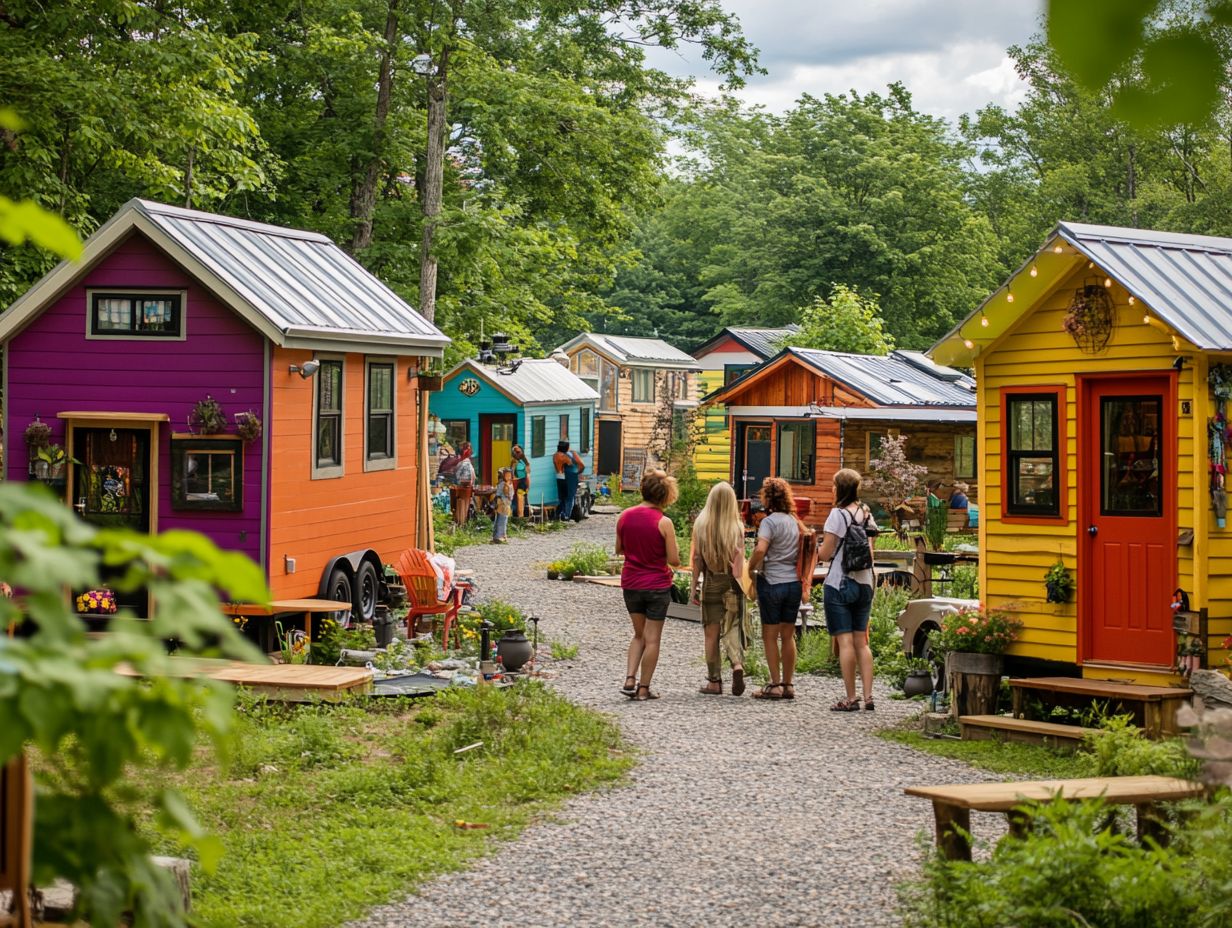
Maintaining relationships in a tiny house community is crucial for creating a friendly and peaceful place to live. Effective communication and proactive conflict resolution serve as the cornerstones for managing the close relationships of these communities.
By actively participating in community events and engaging with your neighbors, you can cultivate strong bonds that significantly enhance your overall experience in tiny house communities.
Communication and Conflict Resolution
Effective communication serves as the foundation of harmonious living in a tiny house community, enabling you to express your needs and resolve conflicts with grace. As a tiny house owner, you can tap into community support systems and shared resources to create an atmosphere of open dialogue, ensuring that every voice is heard and valued.
By nurturing an environment where conversations can flourish, you foster active listening among community members, which is vital for preventing misunderstandings. Initiating informal gatherings can serve as an excellent way to break the ice, encouraging residents to share their thoughts in a relaxed setting.
Organizing regular meetings that focus on specific topics like communal living rules or resource sharing gives you and your neighbors the power to voice concerns and work together on collaborative solutions. These practices not only build trust among residents but also cultivate a sense of unity, transforming conflicts into valuable opportunities for growth and understanding within your community.
Participating in Community Events and Activities
Participating in community events and activities is essential for life in a tiny house community. It fosters social engagement and strengthens connections among residents. Whether it s a potluck or a workshop, these gatherings create opportunities for collaboration, learning, and cultivating a vibrant community atmosphere.
Engaging in activities like gardening clubs and neighborhood clean-ups enhances your sense of belonging and encourages cooperation. Join vibrant gardening clubs to connect and thrive together! Movie nights and skill-sharing sessions improve your quality of life and allow you to share resources, exchange knowledge, and support one another.
This sense of camaraderie often leads to lasting friendships and a dependable support network (friends and neighbors who help each other), enriching your tiny house living experience.
By diving into these meaningful interactions, you can openly share your experiences, celebrate achievements, and collectively tackle challenges, further deepening your ties within the community. Dive into your community activities today and start making connections that could last a lifetime!
Frequently Asked Questions
What factors should I consider when looking for the right tiny house community?
- Location
- Amenities
- Community rules and regulations
- Overall vibe of the community
Some important factors to consider when searching for the right tiny house community include the above.
How can I find available tiny house communities near me?
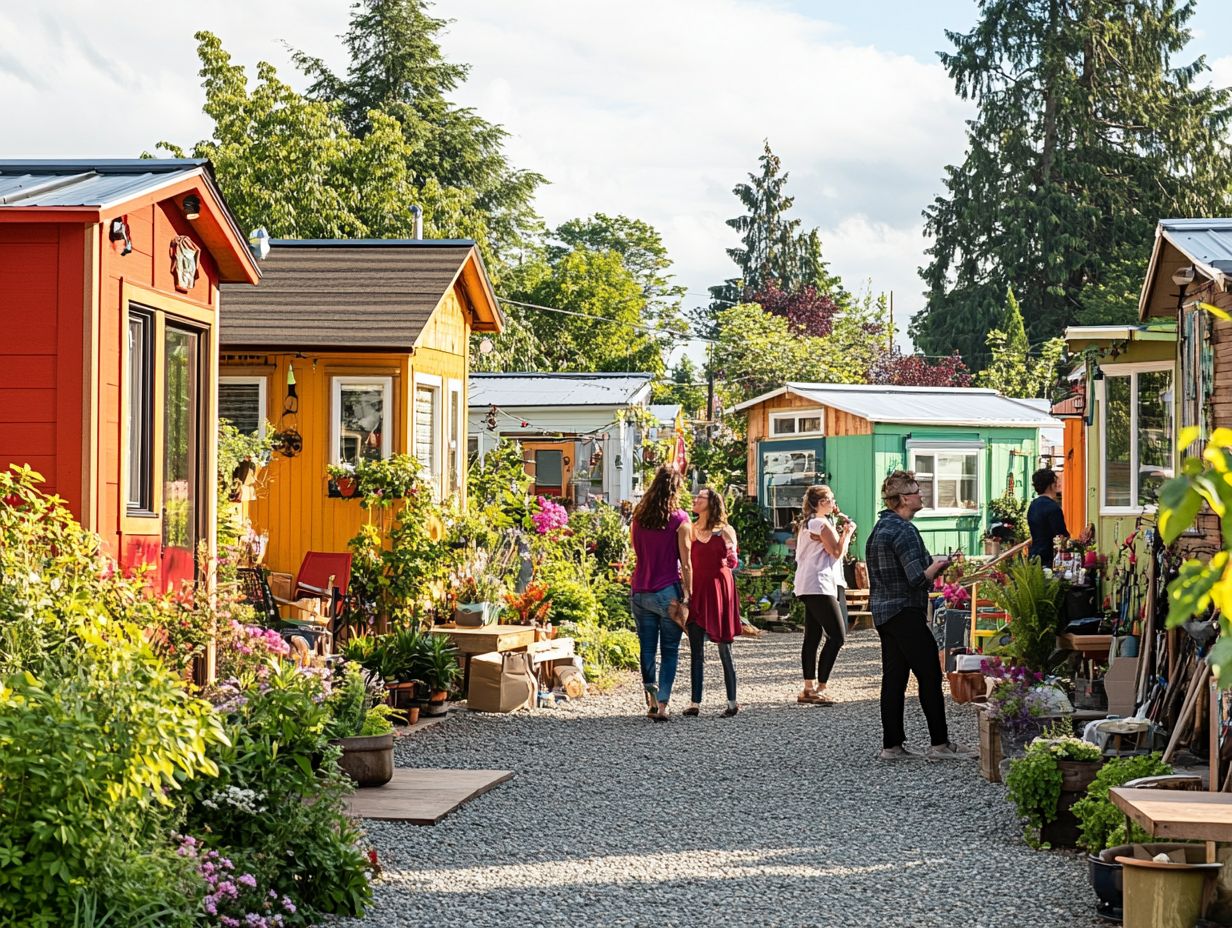
You can also reach out to local real estate agents or join online tiny house community forums for recommendations and updates on available communities.
What amenities should I look for in a tiny house community?
This depends on your personal preferences and needs. Some common amenities in tiny house communities include:
- Shared outdoor spaces
- Laundry facilities
- Parking
- Community events
Consider what amenities are important to you and ensure the community offers them before making a decision.
Are there any rules and regulations I should be aware of before joining a tiny house community?
Yes, every tiny house community will have its own set of rules and regulations. Make sure to thoroughly review and understand them before committing to a community. Some common rules may include restrictions on pets, noise levels, and exterior appearances of tiny houses.
How can I determine the overall atmosphere and community culture of a tiny house community?
You can get a sense of the community culture by attending community events, talking to current residents, and exploring the community’s social media pages. You can also ask the community manager or homeowners association for more information.
What should I do if I can’t find a tiny house community that meets my needs?
If you can’t find an existing tiny house community that meets your needs, consider starting your own community or joining a co-housing community. You can also reach out to local government officials to advocate for zoning and regulations that would allow for more tiny house communities in your area.

